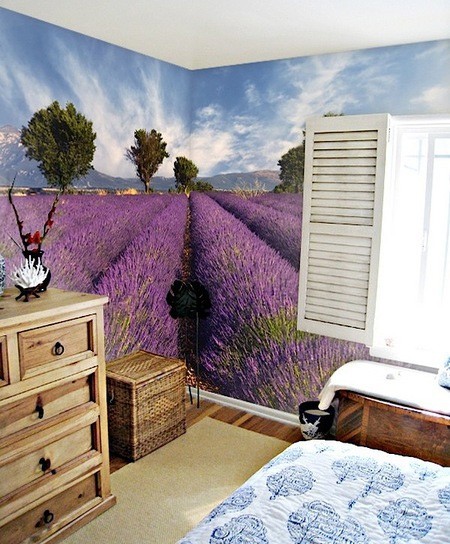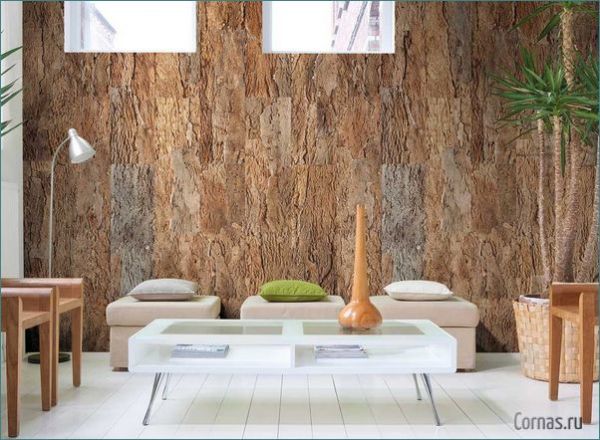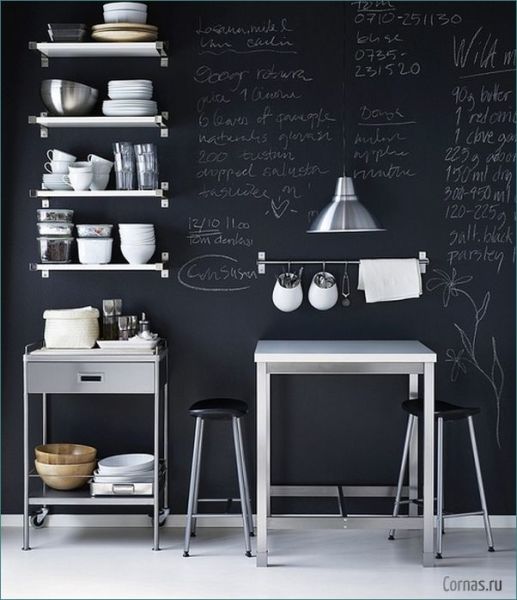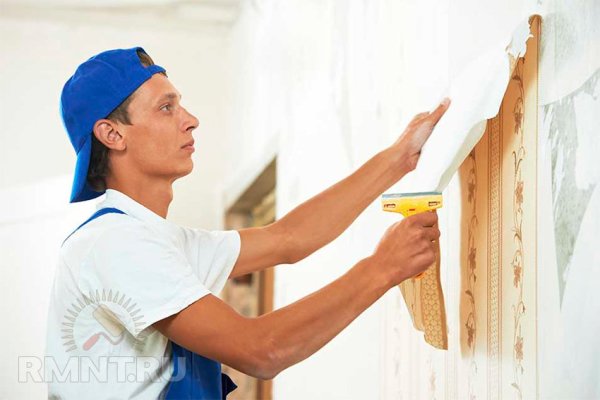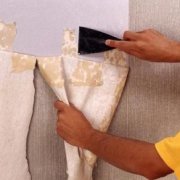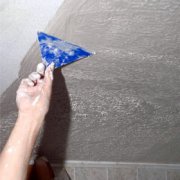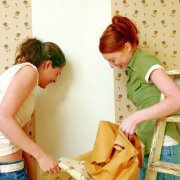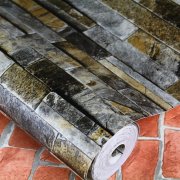How to remove self-adhesive wallpaper with your own hands
Self-adhesive wallpaper on the wall differs from other types of coating in that before gluing, the walls and the wallpaper do not need to be smeared with wallpaper glue. By purchasing such materials, you can save money.
In this case, you will not need to purchase anything other than rags or a roller to smooth the canvas. If everything is clear with the process of sticking sheets, not everyone knows how to remove self-adhesive wallpapers. From the article you can find out the main ways to remove them from the walls.
The content of the article
Features of self-adhesive wallpaper
The main feature of this material is a polyvinyl chloride film, on which a dry layer of glue is applied on the reverse side, covered with a reliable protective paper film that is removed immediately before work. Paper protects the film so that it does not stick when wrapped in a roll.
Rolls of self-adhesive wallpaper are available with the following parameters:
- Width from 40 centimeters to one meter.
- About 15 meters long.
Self-adhesive wallpaper has a wide range for application.
They are used for:
- Bathroom finishes.
- Kitchens (see How to choose wallpaper for the kitchen: do it right).
- Children's room (see What wallpaper to choose for a children's room: interesting ideas).
- Decoration of furniture and other interior items.
Tip: When choosing a film, you should pay attention to what surface it will be used for: for antique furniture, transparent self-adhesive is used to help get rid of small scratches, scuffs, without changing the color and structure of the tree. Glass is best sealed with mosaic patterns.
Self-adhesive wallpaper has several important advantages.
These include:
- Durability.
- High strength.
- Safety for others.
- Large selection of colors and patterns.
- High speed do-it-yourself application and decorating.
- Easy to clean.
- Relatively low price, relative to other analogues.
- Moisture resistance.
- It can be applied to all surfaces:
- wood;
- metal;
- ceramics;
- glass;
- plywood;
- plastic;
- drywall (see Sticking wallpaper on drywall: instructions).
There is no need to purchase devices for work, such as:
- Tassels.
- Rollers.
- Capacities for glue.
- Baths.
You do not need to ventilate the room after the repair.
Types of material
Manufacturers produce several types of self-adhesive wallpaper, united by one property - the presence on the back of the adhesive base, covered with a protective film.
In this case, the front side is different, most often it is:
- Cork. For its manufacture uses cork oak, native to Portugal. The advantages of the material include:
- naturalness;
- increased sound insulation in the room;
- thermal insulation;
- the favorable energy of the cork allows you to create a special cozy, homely atmosphere in the room.
In order to increase the operational characteristics of a rather fragile material in its pure form, the panels are waxed.
- Wallpaper for walls self-adhesive based on PVC. This is a film that is often offered in hardware stores. Their cost is much lower, however, this is a completely artificial coating. It is often used in the manufacture of furniture, items such as wardrobes, where the reverse sides of the sashes are glued with a film - their filler, when installing mirrors.
Material Advantages:
- increased operational properties;
- a wide variety of decors;
- a wide selection of drawings, colors, which allows you to choose the most suitable option.
- Satin Wallpaper. More commonly used for making photo wallpaper, due to its very attractive appearance. Material:
- has enhanced practical characteristics;
- scratch resistant;
- water resistant.
- Chalky self-adhesive. Their difference from the rest is the presence of an additional function in the coating, which allows you to draw on sheets with chalk, as in the photo.
Such a home-made “cool” board is very convenient and fashionable, especially in children's rooms, kitchen or hallway. On it, if necessary, you can leave a note.
Tip: When choosing a self-adhesive wallpaper for a nursery, preference should be given to chalk materials. Children can, without fear of being punished, paint and write whatever they like, and then it is just as easy to wipe the walls or furniture.
How to glue self-adhesive on regular wallpaper
Self-adhesive cloths can be glued on top of an absolutely even wall with thin wallpaper pasted.
Tip: Do not use self-adhesive on a painted wall. In this case, the grip will be very low.
Wallpapering Instructions:
- The corner of the protective film is unbent.
- The top of the canvas with a section of peeled off film must be applied to the top of the wall.
- When glued, the protective film is gradually peeled off.
- The canvas adheres tightly to the wall.
- Smooths thoroughly to avoid air bubbles.
- After gluing, the web is re-smoothed with a roller.
- Sticker next strip is butt.
Tip: Under the film, self-adhesive, especially if it is glossy, all surface roughness, even such as small debris or minor damage, is clearly visible. Therefore, before using such material on wall-papered walls, you should carefully consider everything, is it worth it?
How self-adhesive wallpapers are removed
Even the most beautiful and attractive coating over time can get bored and you want to change it. And how to remove the self-adhesive film, so as not to damage the surface on which it is located?
Self-adhesive film is a very strong material, and its popularity is explained by durability. It is not recommended to paint such wallpaper - coloring compositions will not lie evenly on their surface.
Sticking a new layer on top of the old is also not a very convenient option for a new coating. In this case, the best option is to remove the self-adhesive film.
To remove the paintings you need:
- Prepare hot water.
- Wet the entire surface thoroughly.
- After a few minutes, you can begin to peel off the film, while helping to do this gently with a spatula or an ordinary kitchen knife, taking care not to damage the surface under the film.
If hot water did not help you need:
- Use a hairdryer. In any case, the film must be warmed up well so that the glue can detach from the surface. At the same time, the hair dryer can be an ordinary household hair dryer, but it is better to use an industrial hair dryer: its power is higher, and the area is heated more.
- You can replace the hair dryer with a heater-fan, setting the maximum heating mode and directing it to the surface designed to remove the film.
- After softening the material and the beginning of lagging from the surface, you need to pry off the corner and start gently pulling the sheet layer towards you until it completely leaves.
- Remains of glue from the surface are removed with a solvent, alcohol or gasoline, which depends on the material chosen for the manufacture of the surface.
In detail, the production of self-adhesive wallpapers, their types, methods of gluing on different types of surfaces, material care and removal options, shows the proposed video.
